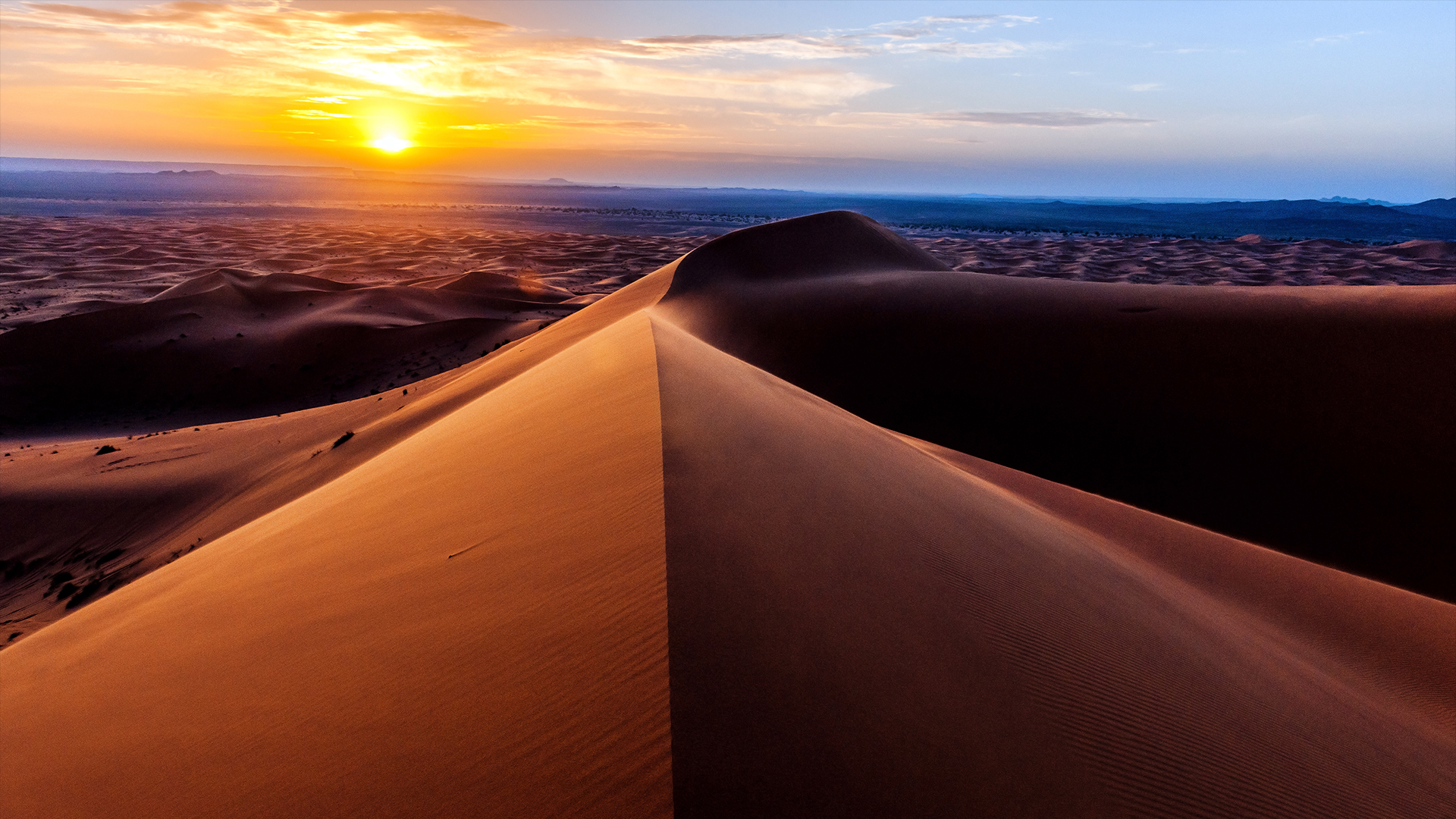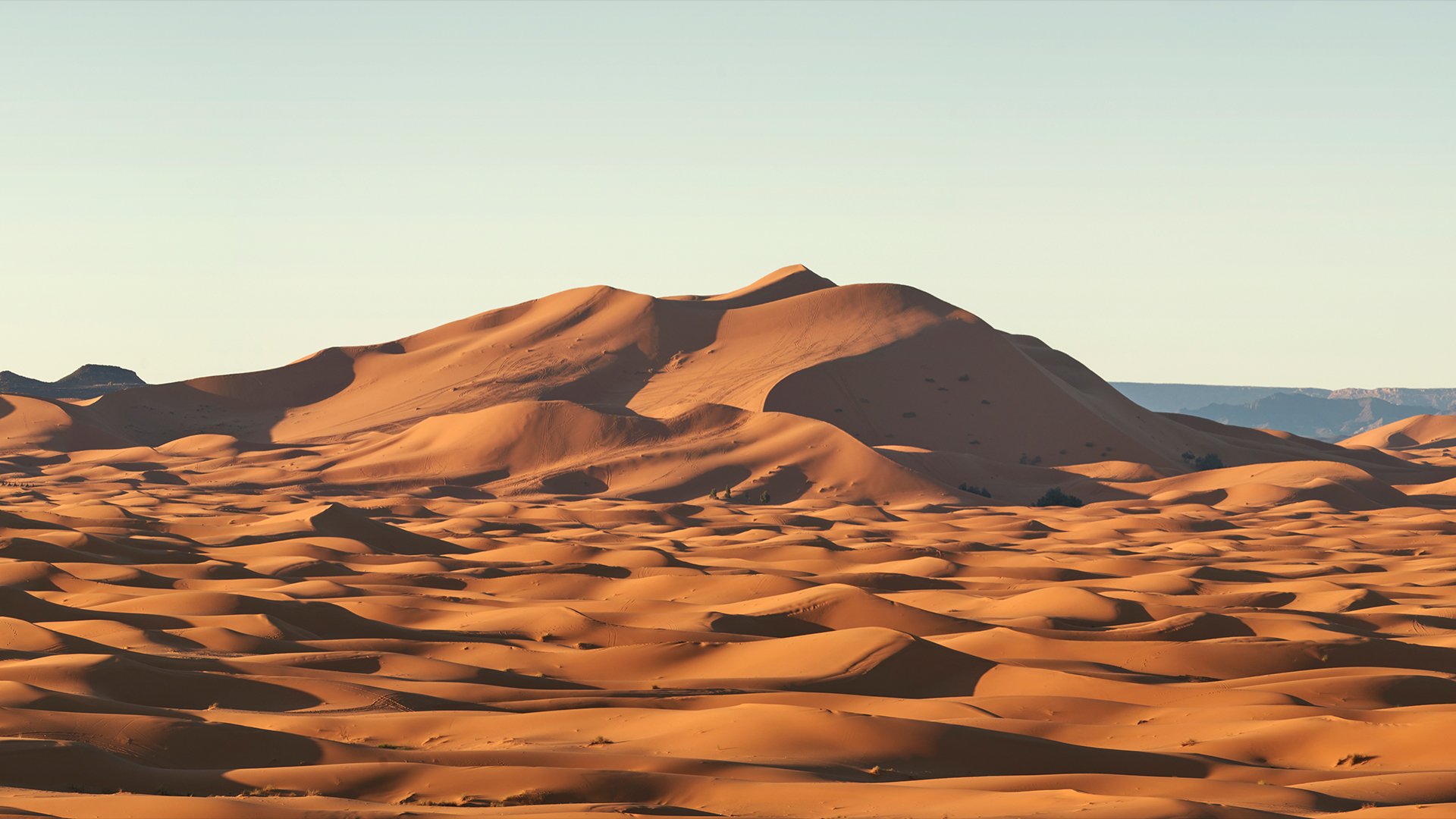Mystery of enormous Saharan 'star dune' finally solved — and it wasn't what scientists were expecting
Tall, many-armed star dunes are common in deserts worldwide, but scientists know little about the histories of these formations.

A towering, star-shaped dune in the Sahara desert formed in less than a thousand years, new research finds.
The study, published March 4 in the journal Scientific Reports, is one of relatively few to look at these so-called star dunes, which are the tallest dunes on Earth. Named for their multiple-armed shapes, star dunes form in places where the winds change direction throughout the year, according to the National Park Service.
Although star dunes are found all over the world, there is only one confirmed star dune in the rock record, from about 250 million years ago in Scotland, Charles Bristow, a professor emeritus of sedimentology at University College London, told Live Science. That may be because researchers don't know what to look for to identify an ancient star dune, he said.
These dunes are difficult to study because they're usually in remote locations, and slogging up a few hundred feet of shifting sand is not easy.
The dune is in Morocco in a dune field called Erg Chebbi. Luckily for the researchers, the area has become a popular tourist stop, so there are good roads and hotels around the edges of the dune field.
The dune itself is about 330 feet (100 meters) tall. It's known as Lala Lallia by locals.
To collect data on the dune, Bristow, study co-author Geoff Duller of Aberystwyth University and research students used ground-penetrating radar, which can detect small differences in sand grain sizes and water content beneath the dune's surface. This technique allowed the researchers to build a picture of the dune's interior layers.
Get the world’s most fascinating discoveries delivered straight to your inbox.
They also dug trenches to take samples of long-buried sands. The quartz in the sand accrues radiation from natural sources within the Earth while buried. By shining a laser on the quartz, researchers can measure this radiation and determine when the sand last saw the surface.
This look inside the dune revealed a surprisingly short history. "The thing that stood out most was how young it is," Bristow said. "We expected that a sand dune that is 100 meters high was going to be quite old … thousands of years, maybe tens of thousands of years. And it turned out that this dune was 900 years old."
The sands near the base of the dune were buried about 12,000 to 13,000 years ago; these represent ancient dunes in the region, Bristow said. Shortly after these old dunes were active came an 8,000-year period when sand did not accumulate. The first part of this quiet period coincided with a shift toward a warm, wet climate in the Sahara around 11,700 years ago, which marked the end of the last ice age and the beginning of the Holocene.
"The Sahara went green," Bristow said. Vegetation sprouted, stabilizing the sand, and humans wandered a marshy environment, probably hunting for food. Pottery fragments and stone tools have been found on one side of Lala Lallia dune.
About 4,000 years ago, this wet period ended and the Sahara dried out again. The dune did not start building up immediately, though, Bristow said. Likely, there was a lag as sand blew through but did not accumulate, or as the dune started accumulating in another location.
Lala Lallia has shifted by about 1.6 feet (0.5 meters), every year, the researchers found.
The star dune started growing only within the past 900 years or so, the team found.
The findings suggest that, although there probably are star dunes locked in sandstones around the world, they're difficult to detect, Bristow said. Because the dunes are huge and lack a single distinguishing feature, researchers would need large exposed beds of rock to get a broad-enough view to identify a star dune. In some places, though, it might be possible to make those identifications.
"It's more an assemblage of features that actually look like other dunes," Bristow said, "but if you take them together, you can say, 'Ah, this could be a star dune.'"

Stephanie Pappas is a contributing writer for Live Science, covering topics ranging from geoscience to archaeology to the human brain and behavior. She was previously a senior writer for Live Science but is now a freelancer based in Denver, Colorado, and regularly contributes to Scientific American and The Monitor, the monthly magazine of the American Psychological Association. Stephanie received a bachelor's degree in psychology from the University of South Carolina and a graduate certificate in science communication from the University of California, Santa Cruz.



